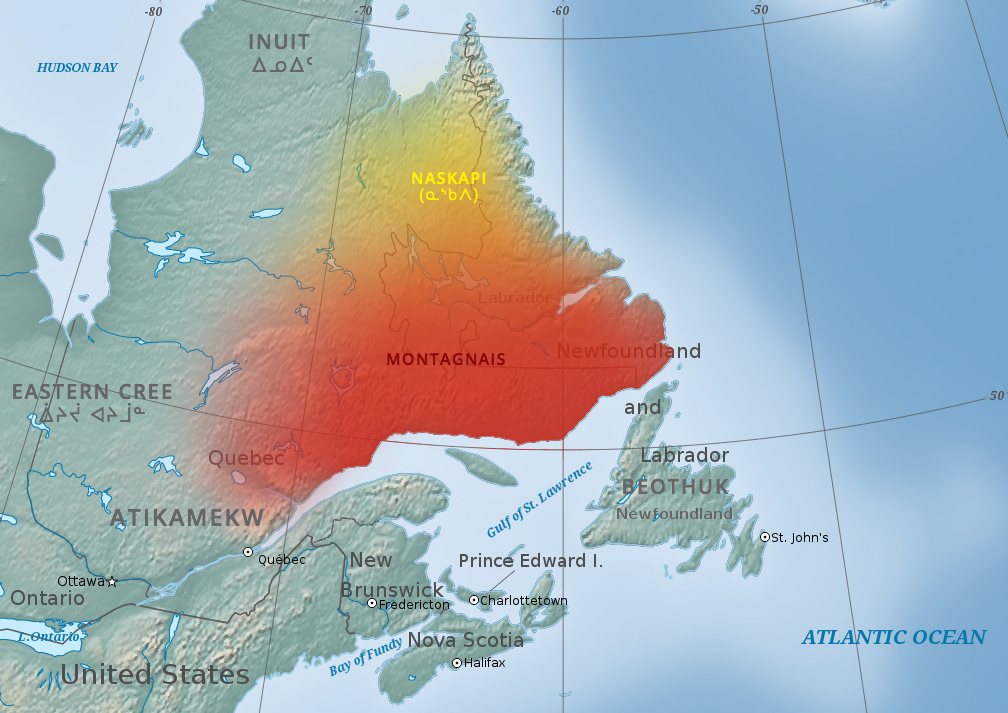|
La Baie, Quebec
La Baie (French pronunciation: / la bɛ/, Quebec French pronunciation: / la be/) is one of three boroughs in the city of Saguenay, Quebec, Canada. It was created during Quebec's municipal reorganization in 2002. From 1976 to 2001, it was known as the Town of La Baie, a municipality composed of the Grande-Baie, Bagotville and Port-Alfred sectors. It is located on the bank of the Ha! Ha! Bay (French: ''baie des Ha! Ha!'') at the mouths of the Ha! Ha! River (French: ''rivière Ha! Ha!'') and the Mars River (French: ''rivière à Mars''). La Baie was the first colony built in the Saguenay-Lac-St-Jean region. It was founded by the Société des Vingt et un who settled the area in 1838. The depth of the banks of the Ha! Ha! Bay's waterways facilitated the rapid development of the region's largest harbour facilities after the railways were built in 1910. The borough's main sources of socio-economic development have been the logging and the pulp and paper industries since the ni ... [...More Info...] [...Related Items...] OR: [Wikipedia] [Google] [Baidu] |
Boroughs Of Saguenay, Quebec
Saguenay, Quebec is divided into three boroughs (french: arrondissements). * Chicoutimi * Jonquière * La Baie La Baie (French pronunciation: / la bɛ/, Quebec French pronunciation: / la be/) is one of three boroughs in the city of Saguenay, Quebec, Canada. It was created during Quebec's municipal reorganization in 2002. From 1976 to 2001, it was know ... These were former cities which ceased to exist on February 18, 2002, when they were amalgamated into the expanded city of Saguenay. The amalgamation involved the following cities and municipalities in addition to the above: * the Municipality of Lac-Kénogami (now part of Jonquière borough) * the City of Laterrière (now part of Chicoutimi borough) * the Municipality of Shipshaw (now part of Jonquière borough) * part of the Township of Tremblay (now part of Chicoutimi borough; the rest of it was annexed to Saint-Honoré) External links Map showing boroughs{dead link, date=November 2016 , bot=InternetArchiveBot , fix- ... [...More Info...] [...Related Items...] OR: [Wikipedia] [Google] [Baidu] |
Pulp And Paper Industry
The pulp and paper industry comprises companies that use wood as raw material and produce pulp, paper, paperboard and other cellulose-based products. Manufacturing process The pulp is fed to a paper machine where it is formed as a paper web and the water is removed from it by pressing and drying. Pressing the sheet removes the water by force. Once the water is forced from the sheet, a special kind of felt, which is not to be confused with the traditional one, is used to collect the water. Whereas, when making paper by hand, a blotter sheet is used instead. Drying involves using air or heat to remove water from the paper sheets. In the earliest days of paper making, this was done by hanging the sheets like laundry. In more modern times, various forms of heated drying mechanisms are used. On the paper machine, the most common is the steam heated can dryer. History of the paper industry Papermaking as a craft is ancient, and for centuries it used various fibers, mainly gra ... [...More Info...] [...Related Items...] OR: [Wikipedia] [Google] [Baidu] |
Innu
The Innu / Ilnu ("man", "person") or Innut / Innuat / Ilnuatsh ("people"), formerly called Montagnais from the French colonial period (French for "mountain people", English pronunciation: ), are the Indigenous inhabitants of territory in the northeastern portion of the present-day province of Labrador and some portions of Quebec. They refer to their traditional homeland as ''Nitassinan'' ("Our Land", ᓂᑕᔅᓯᓇᓐ) or ''Innu-assi'' ("Innu Land"). The Innu are divided into several bands, with the Montagnais being the southernmost group and the Naskapi being the northernmost. Their ancestors were known to have lived on these lands as hunter-gatherers for several thousand years. To support their seasonal hunting migrations, they created portable tents made of animal skins. Their subsistence activities were historically centred on hunting and trapping caribou, moose, deer, and small game. Their language, Ilnu-Aimun or Innu-Aimun (popularly known since the French colonial ... [...More Info...] [...Related Items...] OR: [Wikipedia] [Google] [Baidu] |
Nomadic
A nomad is a member of a community without fixed habitation who regularly moves to and from the same areas. Such groups include hunter-gatherers, pastoral nomads (owning livestock), tinkers and trader nomads. In the twentieth century, the population of nomadic pastoral tribes slowly decreased, reaching an estimated 30–40 million nomads in the world . Nomadic hunting and gathering—following seasonally available wild plants and game—is by far the oldest human subsistence method. Pastoralists raise herds of domesticated livestock, driving or accompanying them in patterns that normally avoid depleting pastures beyond their ability to recover. Nomadism is also a lifestyle adapted to infertile regions such as steppe, tundra, or ice and sand, where mobility is the most efficient strategy for exploiting scarce resources. For example, many groups living in the tundra are reindeer herders and are semi-nomadic, following forage for their animals. Sometimes also described as "n ... [...More Info...] [...Related Items...] OR: [Wikipedia] [Google] [Baidu] |
CKAJ-FM
CKAJ-FM is a French language Canadian radio station located in Saguenay, Quebec. Owned and operated by La Radio Communautaire du Saguenay, it broadcasts on 92.5 MHz with an effective radiated power of 14,164 watts ( class B) using an omnidirectional antenna, while a low-power rebroadcaster serves the borough of La Baie on 99.7 MHz. The station is a community radio station with a mainly oldies format since 1997 (it previously had an adult contemporary format). History The station was first licensed by the Canadian Radio-television and Telecommunications Commission in 1976, and began broadcasting on April 11, 1977 with the call sign CHOC-FM. It originally aired from a low-power 423-watt transmitter, which was increased to 3,000 watts in 1981. Due to a variety of financial and staff turnover problems, the station was granted only short-term license renewals between 1986 and 1998, sometimes for as little as three months at a time rather than the standard seven-year license pe ... [...More Info...] [...Related Items...] OR: [Wikipedia] [Google] [Baidu] |





